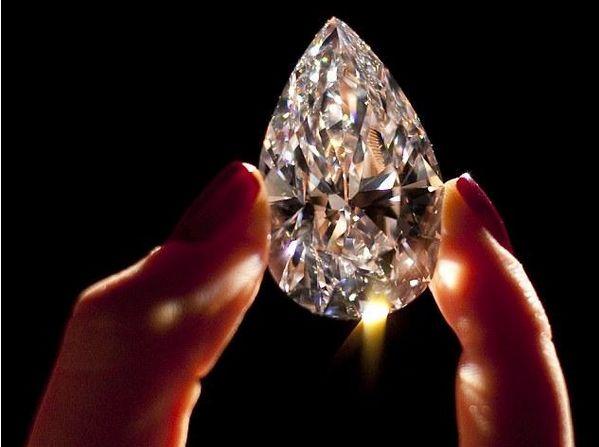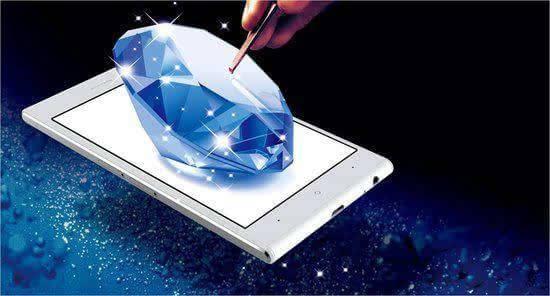A friend asked that the diamond is so hard, what should be hurting it? I said that it would be smashed with a hammer? He said that it is estimated that there will be no problem! I said about this problem, I tried it myself. The live experiment can best explain the problem. I have a hammer. I am ready. You have a diamond and it is a big one. Let me try it. I will go down with a hammer. It’s clear.  Haha, it is estimated that there are not many people who have won the diamonds to do this experiment, so they are not joking. Let's analyze it theoretically. Everyone knows that diamond is diamond. It is a natural hardness material with a Mohs hardness of 10 and a Mohs hardness of this grade. The Vickers hardness is 100 GPa, which exceeds the hardness of all other mineral materials in nature. The glass and stainless steel have a Mohs hardness of 5.5, so the steel knife is usually not traceable on the glass, but the diamond cutter can easily cut the glass, just one stroke There will be a trace that reflects the unparalleled hardness of diamond. It can be said to be invincible for cutting other substances. In industrial applications, it is widely used in cutting, because of its high wear resistance and grinding ability. Tools such as grinding, polishing, sawing, dressing, drilling, etc. Although the hardness of diamonds is particularly large, the ability to resist external force scoring is particularly strong, but the toughness is not strong, it can be said that it is still very fragile, and the toughness of metals such as iron is usually relatively large, and the toughness and metal ratio of diamond are far worse. So the diamond can't stand the hammer and mammoth.
Haha, it is estimated that there are not many people who have won the diamonds to do this experiment, so they are not joking. Let's analyze it theoretically. Everyone knows that diamond is diamond. It is a natural hardness material with a Mohs hardness of 10 and a Mohs hardness of this grade. The Vickers hardness is 100 GPa, which exceeds the hardness of all other mineral materials in nature. The glass and stainless steel have a Mohs hardness of 5.5, so the steel knife is usually not traceable on the glass, but the diamond cutter can easily cut the glass, just one stroke There will be a trace that reflects the unparalleled hardness of diamond. It can be said to be invincible for cutting other substances. In industrial applications, it is widely used in cutting, because of its high wear resistance and grinding ability. Tools such as grinding, polishing, sawing, dressing, drilling, etc. Although the hardness of diamonds is particularly large, the ability to resist external force scoring is particularly strong, but the toughness is not strong, it can be said that it is still very fragile, and the toughness of metals such as iron is usually relatively large, and the toughness and metal ratio of diamond are far worse. So the diamond can't stand the hammer and mammoth.
For those who don't know the situation, this is a bit unexpected, but it is in line with the laws of physics. We all know that iron can be drawn into wire and made into wire. It can be used to wrap the bundled material. It can be made into a steel bar by thickening. It can also be made into a sheet of iron by pressing it into iron. It can be bent at will. Copper and other metals can also be used. Gold and silver have better toughness, and both gold and silver can be made into very thin gold foil. However, stone, jade, glass, crystal, gemstone, corundum and other materials will not work. Their toughness is relatively poor, and they cannot withstand heavy pressure or bending. Therefore, diamonds can't bear the hammer's blow at all. According to some diamond grinders, if you use hard objects to strike the cleavage surface of the diamond, the diamond will easily break.
Usually the toughness of a material is often characterized by the concept of “fracture toughnessâ€, which is a measure of the ease with which a material breaks. The fracture toughness of a diamond and the glass are much lower at a level than metals such as steel, so hammering a diamond with a hammer Or it is similar to the hammer glass, the scene can be imagined.

Another example is the hardness of sapphire, which is 9 degrees Mohs hardness and far harder than steel. In the past two years, some mobile phone manufacturers have used sapphire screens because of their high hardness. They are not easy to be stripped by other items, but they have not been applied in large scale, except that the price is too expensive (equivalent to nearly ten times that of glass screens). The weight is heavier and the transparency is not as good as that of glass. The screen used for sapphire may be too brittle. The sapphire has a fracture toughness similar to that of diamond. If it is accidentally broken, the bigger the screen, the worse the screen toughness. The easier it is to break due to falling and bending. If you change one of these screens, the cost is much greater, so sapphire is not the ideal mobile phone screen material.
 Haha, it is estimated that there are not many people who have won the diamonds to do this experiment, so they are not joking. Let's analyze it theoretically. Everyone knows that diamond is diamond. It is a natural hardness material with a Mohs hardness of 10 and a Mohs hardness of this grade. The Vickers hardness is 100 GPa, which exceeds the hardness of all other mineral materials in nature. The glass and stainless steel have a Mohs hardness of 5.5, so the steel knife is usually not traceable on the glass, but the diamond cutter can easily cut the glass, just one stroke There will be a trace that reflects the unparalleled hardness of diamond. It can be said to be invincible for cutting other substances. In industrial applications, it is widely used in cutting, because of its high wear resistance and grinding ability. Tools such as grinding, polishing, sawing, dressing, drilling, etc. Although the hardness of diamonds is particularly large, the ability to resist external force scoring is particularly strong, but the toughness is not strong, it can be said that it is still very fragile, and the toughness of metals such as iron is usually relatively large, and the toughness and metal ratio of diamond are far worse. So the diamond can't stand the hammer and mammoth.
Haha, it is estimated that there are not many people who have won the diamonds to do this experiment, so they are not joking. Let's analyze it theoretically. Everyone knows that diamond is diamond. It is a natural hardness material with a Mohs hardness of 10 and a Mohs hardness of this grade. The Vickers hardness is 100 GPa, which exceeds the hardness of all other mineral materials in nature. The glass and stainless steel have a Mohs hardness of 5.5, so the steel knife is usually not traceable on the glass, but the diamond cutter can easily cut the glass, just one stroke There will be a trace that reflects the unparalleled hardness of diamond. It can be said to be invincible for cutting other substances. In industrial applications, it is widely used in cutting, because of its high wear resistance and grinding ability. Tools such as grinding, polishing, sawing, dressing, drilling, etc. Although the hardness of diamonds is particularly large, the ability to resist external force scoring is particularly strong, but the toughness is not strong, it can be said that it is still very fragile, and the toughness of metals such as iron is usually relatively large, and the toughness and metal ratio of diamond are far worse. So the diamond can't stand the hammer and mammoth. For those who don't know the situation, this is a bit unexpected, but it is in line with the laws of physics. We all know that iron can be drawn into wire and made into wire. It can be used to wrap the bundled material. It can be made into a steel bar by thickening. It can also be made into a sheet of iron by pressing it into iron. It can be bent at will. Copper and other metals can also be used. Gold and silver have better toughness, and both gold and silver can be made into very thin gold foil. However, stone, jade, glass, crystal, gemstone, corundum and other materials will not work. Their toughness is relatively poor, and they cannot withstand heavy pressure or bending. Therefore, diamonds can't bear the hammer's blow at all. According to some diamond grinders, if you use hard objects to strike the cleavage surface of the diamond, the diamond will easily break.
Usually the toughness of a material is often characterized by the concept of “fracture toughnessâ€, which is a measure of the ease with which a material breaks. The fracture toughness of a diamond and the glass are much lower at a level than metals such as steel, so hammering a diamond with a hammer Or it is similar to the hammer glass, the scene can be imagined.

Another example is the hardness of sapphire, which is 9 degrees Mohs hardness and far harder than steel. In the past two years, some mobile phone manufacturers have used sapphire screens because of their high hardness. They are not easy to be stripped by other items, but they have not been applied in large scale, except that the price is too expensive (equivalent to nearly ten times that of glass screens). The weight is heavier and the transparency is not as good as that of glass. The screen used for sapphire may be too brittle. The sapphire has a fracture toughness similar to that of diamond. If it is accidentally broken, the bigger the screen, the worse the screen toughness. The easier it is to break due to falling and bending. If you change one of these screens, the cost is much greater, so sapphire is not the ideal mobile phone screen material.
Galvanized Razor Barbed Wire,Galvanized Razor Wire,Hot Dip Galvanized Razor Wire,Razor Wire Galvanized
Shenzhou City Hongda Hardware Products Co.,Ltd , https://www.hdpvcwire.com